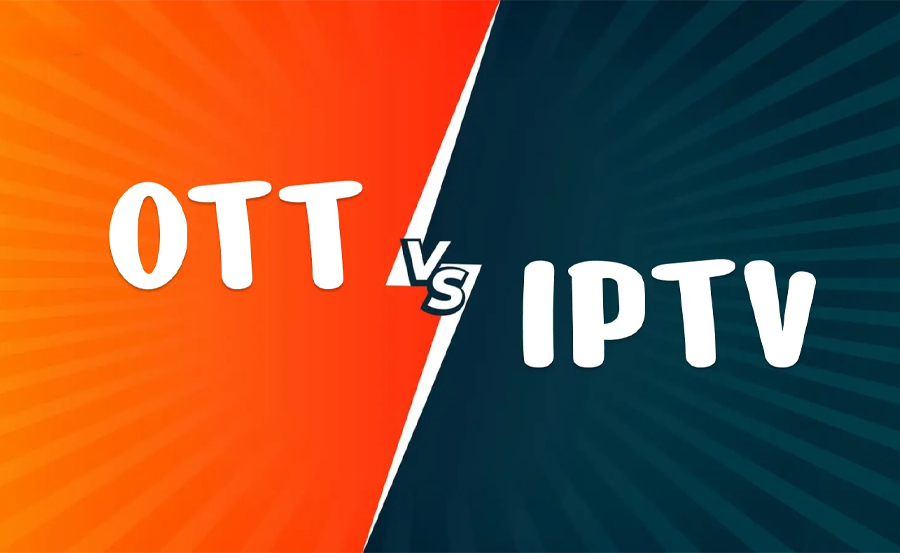As the world of digital entertainment evolves, viewers have more options than ever to access their favorite TV shows, movies, and live events. Two of the most popular delivery methods in this digital age are OTT (Over-The-Top) streaming and traditional IPTV (Internet Protocol Television). While both offer online content delivery, there are key differences between the two that can help you decide which service is best suited to your needs. In this article, we’ll explore the distinctions between OTT and IPTV and help guide you to make the right choice.
1 Month IPTV Subscription – Buy Now
What is OTT?
OTT (Over-The-Top) refers to content delivered over the internet without the need for traditional cable, satellite, or broadcast television platforms. With OTT, viewers can access content directly through apps on smart TVs, mobile devices, or streaming boxes like Roku, Amazon Fire TV, or Apple TV. Some of the most common OTT services include Netflix, Hulu, Disney+, and Amazon Prime Video.
Key Features of OTT:
- Internet-Based Delivery: OTT services rely solely on the internet to stream content, making them available to anyone with a stable connection.
- Device Flexibility: OTT platforms can be accessed across a wide range of devices, from smartphones and tablets to smart TVs and laptops.
- On-Demand and Live Streaming: OTT platforms offer both on-demand content (movies, shows, and documentaries) and live-streaming options for sports, news, and other real-time events.
- No Geographic Restrictions: With OTT, users can access content from anywhere in the world, provided that the service is available in that region.
What is Traditional IPTV?
Traditional IPTV, or Internet Protocol Television, refers to a service where television content is delivered through a managed, closed network, often provided by a telecom company. Unlike OTT, which is delivered via the open internet, IPTV streams are transmitted over a controlled, high-speed broadband connection. Traditional IPTV is often bundled with other services such as internet and phone services and includes live TV, time-shifted media, and on-demand content.
Key Features of Traditional IPTV:
- Managed Network: IPTV operates on a private network managed by a service provider, ensuring a higher quality of service with minimal buffering or streaming interruptions.
- Subscription-Based Model: IPTV usually comes as part of a bundle with internet and phone services, requiring users to subscribe through a telecom provider.
- Content Flexibility: IPTV offers live TV, video on demand (VOD), and time-shifted media, allowing users to pause, rewind, or catch up on content that has aired.
- Better Content Control: Since the service provider manages the network, IPTV often offers more stability and fewer interruptions than OTT.How to Use Plex for IPTV Streaming: A Complete Beginner’s Guide
Key Differences Between OTT and IPTV
While both OTT and IPTV deliver content over the internet, there are notable differences in how they operate and what they offer:
- Infrastructure: OTT uses the open internet to deliver content, while IPTV relies on a private, managed network that is typically bundled with broadband or other services.
- Content Access: OTT services are available on-demand, accessible on multiple devices, and provide a more flexible, user-driven experience. IPTV often mimics traditional cable TV, offering live TV and on-demand content with a focus on stability and network quality.
- Pricing: OTT services generally come with lower subscription fees and can be canceled at any time. IPTV, on the other hand, is often part of a long-term subscription plan bundled with internet and phone services.
- Customization: OTT platforms like Netflix or Amazon Prime Video allow users to choose what they want to watch, when they want to watch it. IPTV is more traditional, offering scheduled live TV alongside time-shifted content.
Choosing the Right Service for You
When deciding between OTT and traditional IPTV, it’s important to consider your viewing preferences, internet connection, and budget. Below are some factors to help you make an informed choice:
Go for OTT if:
- You prefer watching content on-demand.
- You want the flexibility to access content on different devices, anytime and anywhere.
- You’re looking for lower monthly costs and the ability to cancel or change subscriptions easily.
- You have a reliable high-speed internet connection that supports smooth streaming.
Choose IPTV if:
- You prefer the structure of traditional TV, with live channels and scheduled programming.
- You want a reliable connection with minimal buffering and disruptions, thanks to the private, managed network.TiviMate Advanced Settings: Optimize Your IPTV Viewing Experience
- You’re interested in bundling your TV, internet, and phone services for more convenience.
- You enjoy time-shifted viewing options, such as pausing or rewinding live broadcasts.
Hybrid Services: The Best of Both Worlds?
It’s worth noting that some providers now offer hybrid solutions, combining aspects of both OTT and IPTV services. These hybrid models give viewers the flexibility of OTT with the stability and reliability of IPTV. For example, some telecom companies offer IPTV services with access to popular OTT apps like Netflix or Disney+ through their set-top boxes.
Conclusion
Both OTT and IPTV provide excellent ways to stream your favorite content, but the right choice depends on your personal needs and preferences. OTT offers more freedom, lower costs, and a flexible viewing experience, while IPTV is ideal for those who prioritize reliability and traditional TV features like live channels and time-shifted viewing. Evaluate your viewing habits, internet connection, and budget to make the best decision for your entertainment needs.
With both OTT and IPTV evolving, the future promises even more innovative streaming solutions tailored to our ever-changing preferences.

